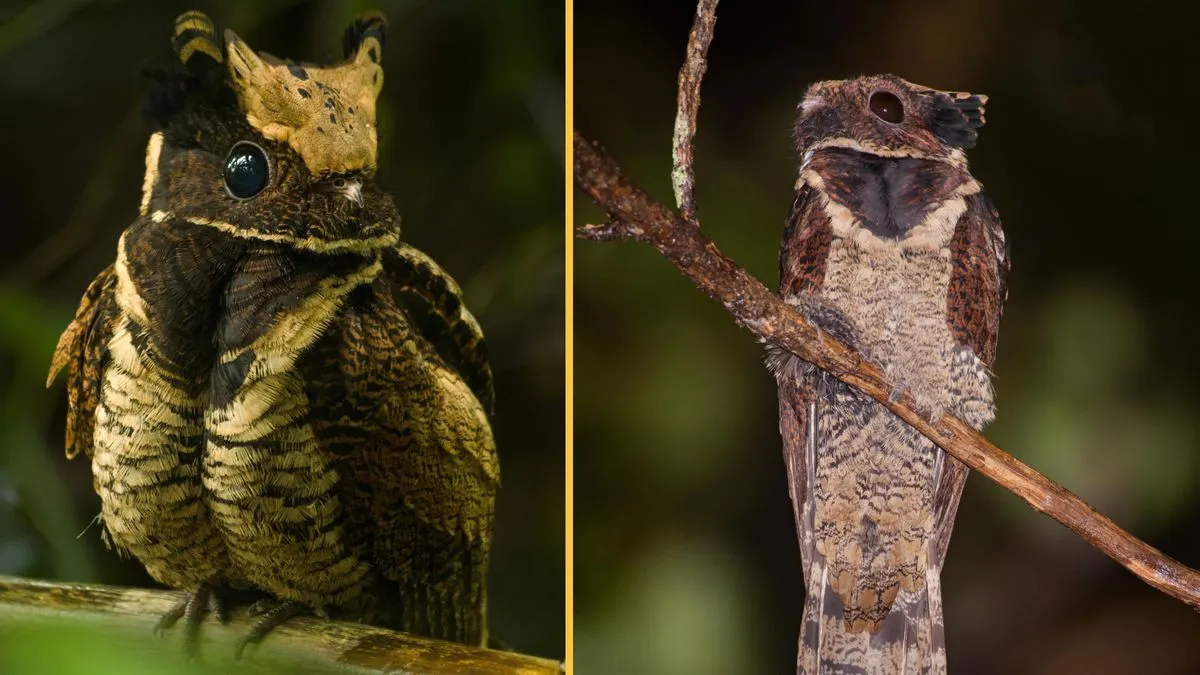Great eared nightjars live on the forest floor, remaining motionless throughout the day, camouflaged among leaf litter and tree stumps.
The Great Eared Nightjar: The “Baby Dragon” of the Forest
With its large, forward-facing eyes, sweeping wings, and feathered head tufts that resemble horns or ears, the great eared nightjar (Lyncornis macrotis) looks more like a creature from myth than a real bird. Nicknamed the “baby dragon,” this elusive nocturnal species is as mysterious as it is mesmerizing.
A Master of Camouflage
Measuring between 12 and 16 inches (30 to 40 centimeters) long, the great eared nightjar is found in dense, low-lying forests throughout South and Southeast Asia. Its mottled brown, gray, and black plumage blends seamlessly with the forest floor, allowing it to virtually disappear among fallen leaves and tree stumps during daylight hours. This exceptional camouflage helps the bird avoid predators without needing to flee.
An Unusual Nesting Strategy
Unlike many birds that build nests in trees, the great eared nightjar lays a single egg directly on the forest floor or on a bed of dry leaves. Though the exact reason for this ground-nesting behavior is unclear, experts believe the bird’s natural camouflage offers sufficient protection for both egg and chick. Hidden by their surroundings, the egg and later the chick are far less likely to be spotted by predators.
Both parents take turns incubating the egg and, after hatching, continue to care for the chick until it is old enough to survive on its own. Even young chicks benefit from excellent camouflage, remaining almost invisible to would-be threats.
Silent Flight, Insect Diet
Despite their fierce appearance, great eared nightjars feed primarily on moths and other flying insects. They hunt at dusk and dawn, flying silently through the forest with a wide, gaping mouth designed to snatch prey mid-air. Their stealthy flight allows them to capture insects with ease while evading nocturnal predators like owls.
A Haunting Voice in the Twilight
One of the most distinctive traits of this bird is its eerie, echoing call. Often heard at dusk and dawn, the great eared nightjar’s vocalization begins with a sharp “tsiik,” followed by a pause, then a longer, whistle-like note. These calls serve multiple purposes: attracting mates, defending territory, and warning others of potential danger.
